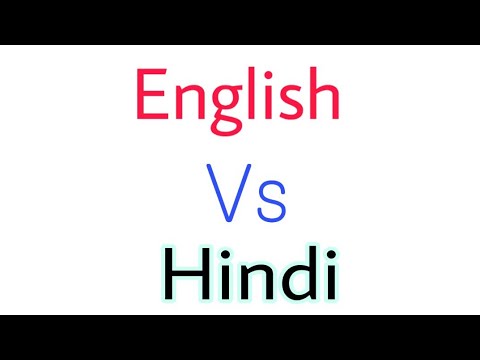english vs hindi

Language serves as a profound vehicle for communication, culture, and identity. In the diverse tapestry of global languages, English and Hindi stand out as prominent representatives, each with its unique history, cultural significance, and global impact. This article delves into the rich nuances of English and Hindi, exploring their differences, similarities, and the broader implications they hold in today’s interconnected world.
Historical Evolution:
English traces its roots back to the Germanic tribes that inhabited England during the Early Middle Ages. Influenced by Latin, French, and Old Norse, English evolved into Middle English and eventually Modern English, becoming a global lingua franca due to the British Empire’s expansive reach.
On the other hand, Hindi, a descendant of Sanskrit, developed over centuries in the Indian subcontinent. With its script Devanagari, Hindi evolved alongside other Indo-Aryan languages, enriched by Persian, Arabic, and Turkish influences during medieval times.
Linguistic Characteristics:
English and Hindi differ significantly in phonetics, grammar, and vocabulary. English employs the Latin script and is renowned for its vast vocabulary, extensive use of phrasal verbs, and nuanced grammar, including tense variations and irregularities.
Hindi, written in Devanagari script, features a phonetic alphabet with straightforward pronunciation rules. Its grammar revolves around gender, verb conjugation, and postpositions, offering a rich array of idiomatic expressions and poetic devices.
Cultural Significance:
Both languages serve as cultural repositories, reflecting the histories, values, and identities of their speakers. English, as the language of Shakespearean literature, scientific discourse, and global business, embodies modernity, innovation, and cultural exchange.
Conversely, Hindi symbolizes India’s rich tapestry of traditions, spirituality, and artistic expression. It serves as the lingua franca of Bollywood, India’s prolific film industry, and resonates deeply with the country’s diverse regional languages and dialects.
Global Impact:
English’s global dominance as a language of commerce, diplomacy, and technology is unparalleled. With over 1.5 billion speakers worldwide, English facilitates international communication, fosters cross-cultural understanding, and drives economic growth.
Hindi, with approximately 600 million speakers, holds significant sway in South Asia, particularly in India, where it is the official language. Its growing influence extends to the Indian diaspora worldwide, fostering cultural connections and promoting India’s soft power on the global stage.
Challenges and Opportunities:
Despite their global reach, English and Hindi face challenges in preserving linguistic diversity and inclusivity. English dominance raises concerns about cultural homogenization and linguistic imperialism, marginalizing indigenous languages and dialects.
Similarly, Hindi’s ascendancy as India’s national language sparks debates over linguistic hegemony, regional autonomy, and inclusivity for non-Hindi-speaking communities. Efforts to promote multilingualism and preserve indigenous languages are crucial for fostering linguistic diversity and cultural harmony.
Conclusion:
English and Hindi, with their distinct histories, linguistic characteristics, and global impact, epitomize the dynamic interplay between language, culture, and identity. While English serves as a universal medium of communication and innovation, Hindi embodies India’s rich cultural heritage and linguistic diversity.
As the world becomes increasingly interconnected, embracing linguistic diversity, promoting multilingualism, and fostering cultural exchange are essential for building inclusive societies and nurturing global understanding. Whether through English or Hindi, language remains a powerful bridge that connects people, transcends borders, and enriches the tapestry of human experience.





